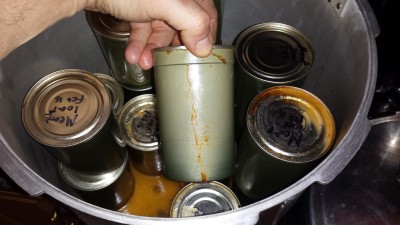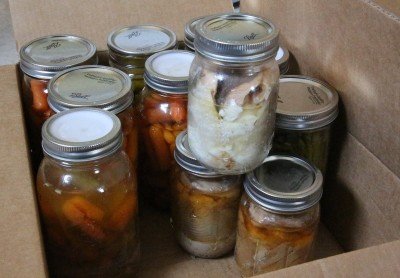The title of this article sounds more like a scientific paper than a survival topic, and that is by design. I would prefer that the dufus brigade not read it. Canning food demands attention to detail, and though this method of canning is a fringe, do not try this at home kind of idea, it is still canning. You need to pay attention to the details. I would not suggest canning with just paraffin wax except in a genuine “use or or lose it” food survival situation, but it does work.
Search: botulinum
Show First
Prepping 101: Sealing Food in Cans for Long Term Storage – How to Set Up & Adjust an Ives Way Can Sealer
This week will be my first installment into canning food in steel cans. Think of it this way. You haven’t eaten in a week. You just killed a deer. You really would like to be able to eat venison next week without having to kill another deer. What do you do?
Prepping 101: Rocket Stove Canning
No matter how much food you store, it will never be enough. At some point you will have to either grow your own food, or provide a valuable product or service that you can swap for food, or for the “coin of the realm” (whatever money turns out to still work after the collapse), that you can swap for food. But in most parts of the world, food doesn’t grow year round regardless. Grains will store with little outside intervention. Beans will certainly store in most environments, and potatoes, winter squashes, and some fruits will last the winter if you provide for them a root cellar of some sort that will keep them fresh. Other than that, if you want to eat vegetables and fruits year round, you will have to learn how to can your food. It isn’t hard, but you have to do it now, because as you’ll see, canning is fraught with pitfalls if you don’t do it right.



